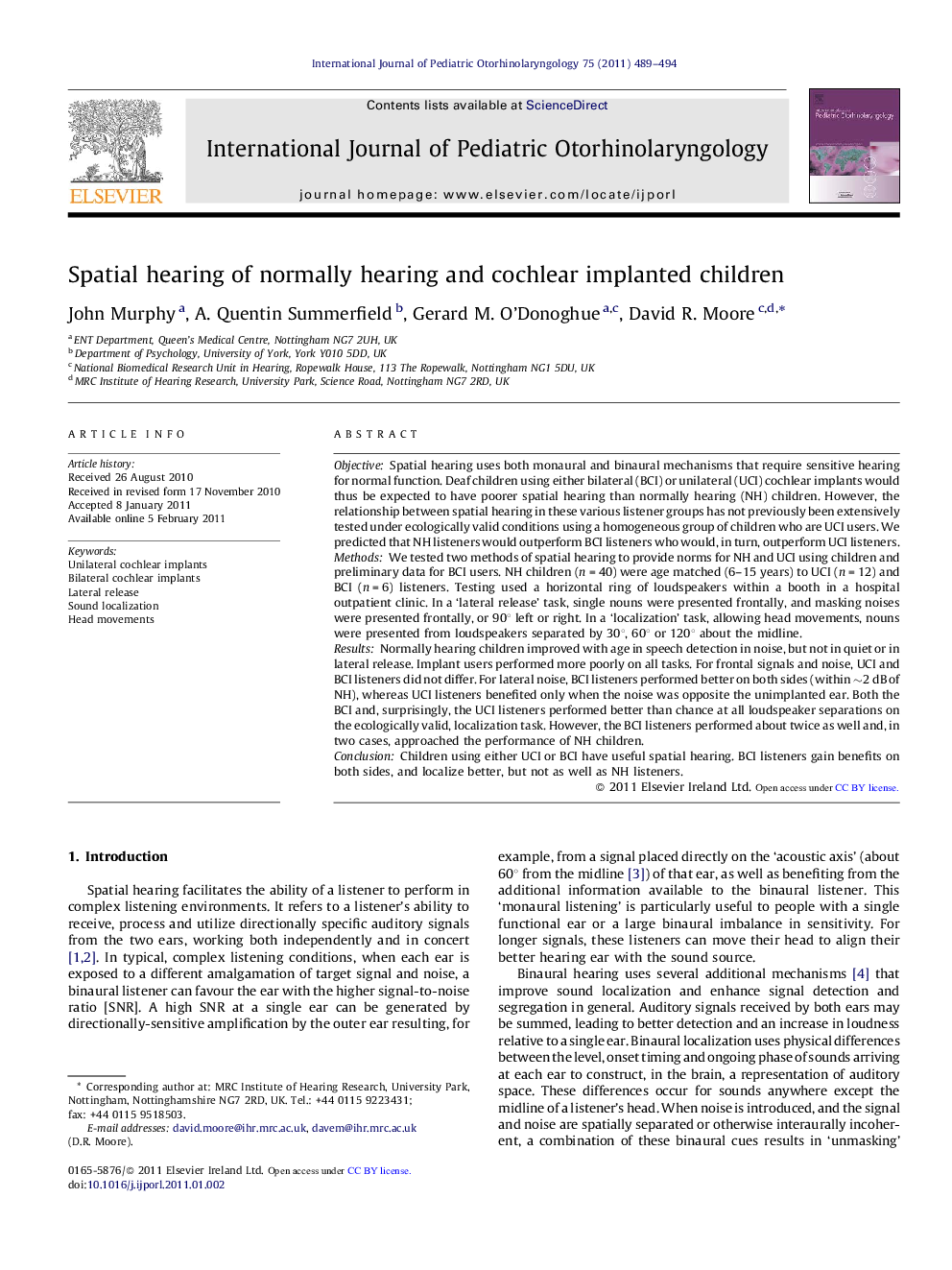| کد مقاله | کد نشریه | سال انتشار | مقاله انگلیسی | نسخه تمام متن |
|---|---|---|---|---|
| 6214043 | 1606046 | 2011 | 6 صفحه PDF | دانلود رایگان |

ObjectiveSpatial hearing uses both monaural and binaural mechanisms that require sensitive hearing for normal function. Deaf children using either bilateral (BCI) or unilateral (UCI) cochlear implants would thus be expected to have poorer spatial hearing than normally hearing (NH) children. However, the relationship between spatial hearing in these various listener groups has not previously been extensively tested under ecologically valid conditions using a homogeneous group of children who are UCI users. We predicted that NH listeners would outperform BCI listeners who would, in turn, outperform UCI listeners.MethodsWe tested two methods of spatial hearing to provide norms for NH and UCI using children and preliminary data for BCI users. NH children (n = 40) were age matched (6-15 years) to UCI (n = 12) and BCI (n = 6) listeners. Testing used a horizontal ring of loudspeakers within a booth in a hospital outpatient clinic. In a 'lateral release' task, single nouns were presented frontally, and masking noises were presented frontally, or 90° left or right. In a 'localization' task, allowing head movements, nouns were presented from loudspeakers separated by 30°, 60° or 120° about the midline.ResultsNormally hearing children improved with age in speech detection in noise, but not in quiet or in lateral release. Implant users performed more poorly on all tasks. For frontal signals and noise, UCI and BCI listeners did not differ. For lateral noise, BCI listeners performed better on both sides (within â¼2 dB of NH), whereas UCI listeners benefited only when the noise was opposite the unimplanted ear. Both the BCI and, surprisingly, the UCI listeners performed better than chance at all loudspeaker separations on the ecologically valid, localization task. However, the BCI listeners performed about twice as well and, in two cases, approached the performance of NH children.ConclusionChildren using either UCI or BCI have useful spatial hearing. BCI listeners gain benefits on both sides, and localize better, but not as well as NH listeners.
Journal: International Journal of Pediatric Otorhinolaryngology - Volume 75, Issue 4, April 2011, Pages 489-494